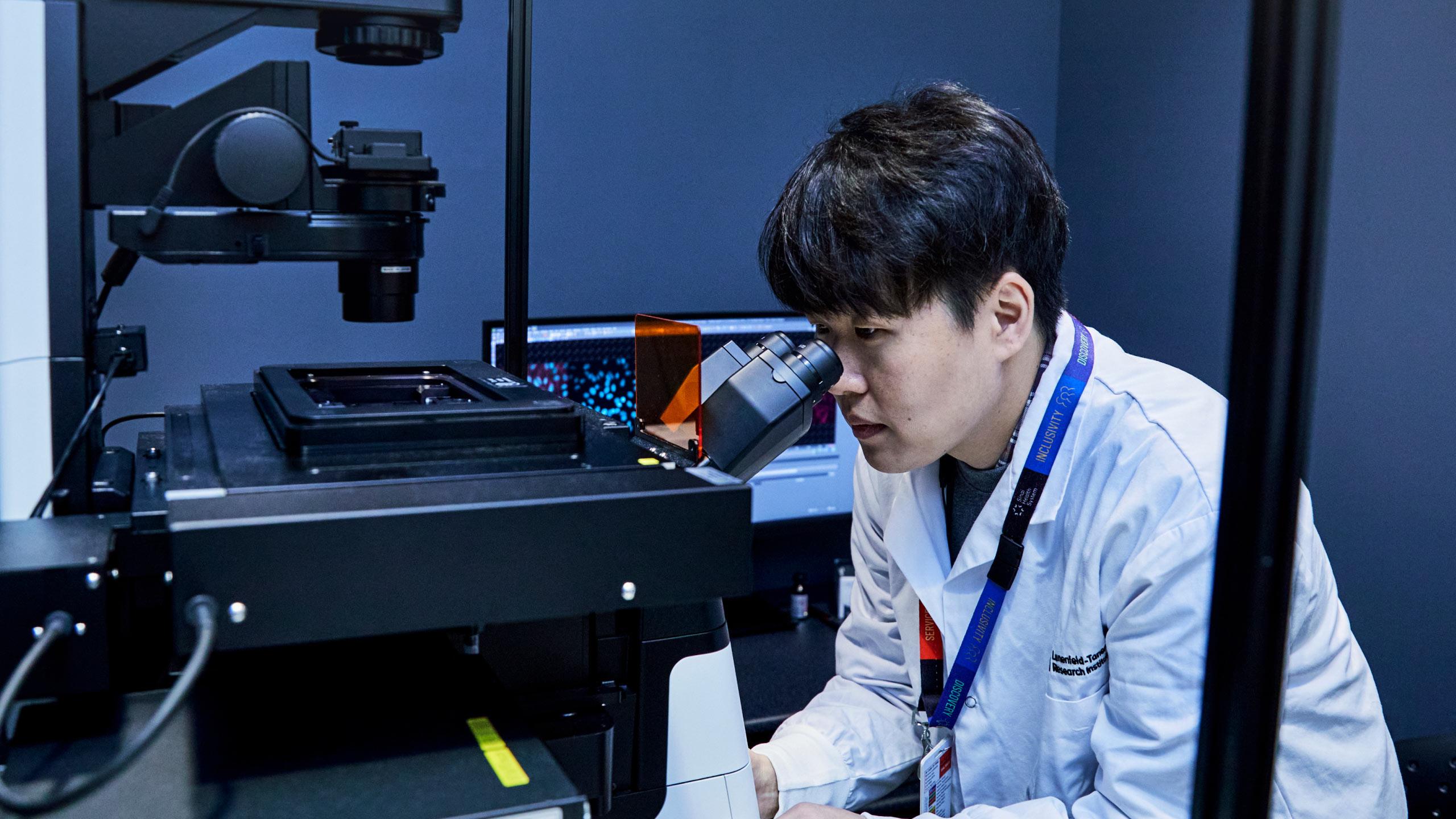Prostate Cancer
Learn more about prostate cancer and how it’s treated.
Overview
Prostate cancer is a type of cancer that starts in the prostate. The prostate is the gland that produces the fluid that transports sperm.
Prostate cancer is the one of the most common cancers. Factors that increase your risk of developing prostate cancers include age, black ethnicity and a family history of prostate cancer.
If prostate cancer is diagnosed early, the outcomes are usually very good. However, there are often no symptoms of prostate cancer in its early stages. So it's important to have regular screening tests if you have a higher risk of developing prostate cancer.
Types of prostate cancer
Adenocarcinoma
Adenocarcinomas are cancers that start in the glands that line your organs. Almost all cases of prostate cancer are adenocarcinomas, which tend to grow more slowly than other types of cancer.
Adenocarcinomas often develop in more than one place, so it is possible to have more than one tumour on the prostate.
Other types
Other rare types of prostate cancer include:
- Small cell carcinomas
- Transitional cell carcinomas
- Neuroendocrine tumours
- Sarcomas
Symptoms
Prostate cancer usually has no symptoms in the early stages. Later stage prostate cancer symptoms include any of the following:
- Blood in your urine
- Blood in your semen
- Frequent urination
- Painful ejaculation
- Difficulty getting an erection
Having these symptoms does not necessarily mean you have prostate cancer. These are common symptoms for many conditions.
Prostate cancer screening
Screening for prostate cancer may be recommended for people with risk factors. The two tests that are commonly used for prostate cancer screening are a digital rectal exam and a prostate-specific antigen (PSA) blood test.
Digital rectal exam
During a digital rectal exam, a physician inserts a gloved finger into the rectum. The prostate is close to the rectum which allows the physician to feel for growths or enlargement.
Prostate-specific antigen (PSA) test
The prostate-specific antigen (PSA) test is a blood test that measures the amount of PSA in your blood. PSA is a protein that is produced by the prostate. Higher levels of PSA in the blood can by a sign of prostate cancer.
Diagnosis
If you have symptoms of prostate cancer, there are several tests (in addition to the two screening tests listed above) that are used to make a diagnosis.
Blood tests
Blood tests can be used to look for markers of prostate cancer in your blood as well as other signs of health such as your white blood cell, red blood cell and platelet counts.
Other blood tests measure specific chemicals in the blood that can indicate if prostate cancer is affecting other organs in the body.
Transrectal ultrasound
During a transrectal ultrasound, a technician inserts a small probe into the rectum. The sound waves of the ultrasound help create an image of the prostate so we can see if there are any abnormalities.
Biopsy
If there are any abnormalities found through your blood work or transrectal ultrasound, a biopsy will be needed to make a definite diagnosis.
During a biopsy, a physician uses a thin needle to remove a small amount of tissue from the prostate so it can be examined under a microscope and analyzed by a pathologist.
The biopsy can usually happen at the same time as the transrectal ultrasound.
Uroflow test
An uroflow checks if you have any problems urinating. During the test, you urinate in a special device that measures the amount of urine and the time it takes for you to empty your bladder.
Post-void residual urine test
A post-void residual urine test measures how much urine is left in your bladder after you finish urinating.
You urinate right before the test. The technician then uses an ultrasound probe to take images of your bladder. This helps the physician see how much urine is left in your bladder.
Being unable to completely empty your bladder can be a sign of a problem with your prostate.
Magnetic resonance imaging (MRI)
MRIs can also help diagnose prostate cancer. An MRI is an imaging test that show cross-sectional imagines of organs and tissues. It provides more detailed image of your prostate than an ultrasound.
Cancer staging
If cancer is found, the next step is determining the stage of cancer. Knowing the stage of your cancer helps your care team develop your treatment plan. Physicians determine the stage of your cancer based on the size and location of the tumour, whether cancer cells are in the lymph nodes and whether there are cancer cells in other parts of the body.
Treatment
If you have been diagnosed with prostate cancer, our uro-oncology care team will discuss your treatment options with you. We will help you weigh the benefits of each treatment option against the possible risks and side effects.
The treatment options for prostate cancer depend on the type of cancer you have and the stage of your disease.
If your prostate cancer is in a very early stage, you may not immediately need treatment. Instead, we may recommend regular monitoring of your cancer.
The most common treatments for prostate cancer are surgery, chemotherapy, radiation therapy and hormone therapy. Depending on your specific needs, we may recommend combining different therapies.
Surgery
During surgery, the surgeon removes the prostate and some of the lymph nodes. This is called a prostatectomy.
Depending on your needs, a laparoscopic prostatectomy may be an option. During laparoscopic surgery, the surgeon makes five small incisions rather than one large incision. This allows for faster healing and less scarring.
Hormone therapy
Hormone therapy lowers the level of hormones that can cause prostate cancer to grow. This can be done by using surgery or medication. Lower testosterone levels can shrink tumours and slow the growth of the cancer.








